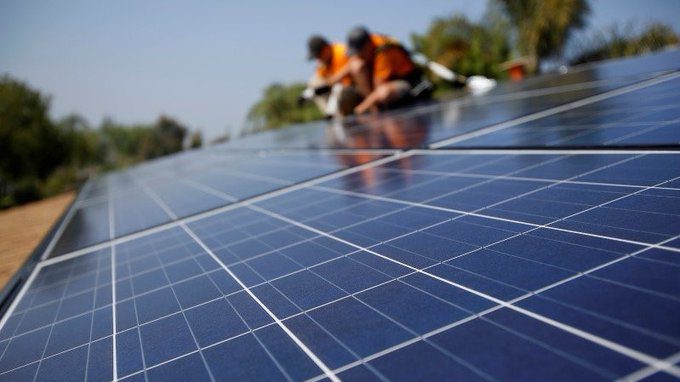Utility Solar Market Drives Q2 Growth as Pandemic Causes Drop in Rooftop Solar Installations

Note: The Q3 2020 U.S. Solar Market Insight covers installation volumes in Q2 2020 and forward-looking trends. The second quarter of 2020 was the first full quarter in which the U.S. solar industry was exposed to the risks associated with the coronavirus pandemic. The forecasts in this report account for the coronavirus but are subject to uncertainty based on the unprecedented health, social and economic conditions in the United States.
WASHINGTON, D.C. and HOUSTON, TX — The U.S. solar market installed 3.5 gigawatts (GW) of new solar photovoltaic (PV) capacity in Q2 2020, a drop of 6% from Q1 installations. At the same time, utility-scale solar remained resilient despite the Covid-19 pandemic, representing 71% of all new solar capacity brought online in Q2.
However, the U.S. Solar Market Insight Q3 2020 report, released today by the Solar Energy Industries Association (SEIA) and Wood Mackenzie, noted that the residential and non-residential segments saw a significant slowdown in the quarter. Installations were down 23% quarter over quarter in the residential segment, and 12% quarter over quarter in the non-residential sector, due to restrictions and shelter-in-place orders imposed to curb the pandemic.
“The growth we see in this report underscores the resilience of the solar industry as we deal with Covid work stoppages, a struggling economy, harmful trade policy and an uncertain tax environment,” said Abigail Ross Hopper, SEIA’s president and CEO. “Tens of thousands of our workers have been laid off or furloughed amid this crisis, and SEIA remains firm in our commitment to fight for equitable policy that allows the solar industry to compete and grow our workforce.”
Solar accounted for 37% all new electric generating capacity added in the U.S. in the first half of 2020, as Texas and Florida each installed over 900 megawatts (MW) across distributed and utility solar in Q2. The report said a total of 8.7 GWdc of new utility PV power-purchase agreements were announced in the second quarter, bringing the contracted pipeline to a total of 62 GWdc.
“The impact of the pandemic on residential solar installations varied substantially by geography,” said Austin Perea, senior analyst at Wood Mackenzie. “States with more restrictive stay-at-home orders saw significant declines in quarterly solar additions, whereas states with less restrictive stay-at-home directives – such as Arizona and Texas – saw marginal if any decline in quarterly installations.”
Wood Mackenzie forecasts 37% annual growth in 2020, with 18 GW of new solar installations expected. This is a 6% decrease from pre-pandemic forecasts
Looking ahead, the U.S. solar market is expected to install nearly 100 GW from 2021-2025, a 42% increase in the amount of solar installed over the last five years.
About SEIA®:
The Solar Energy Industries Association® (SEIA) is leading the transformation to a clean energy economy, creating the framework for solar to achieve 20% of U.S. electricity generation by 2030. SEIA works with its 1,000 member companies and other strategic partners to fight for policies that create jobs in every community and shape fair market rules that promote competition and the growth of reliable, low-cost exissolar power. Founded in 1974, SEIA is a national trade association building a comprehensive vision for the Solar+ Decade through research, education and advocacy. Visit SEIA online at www.seia.org.
About Wood Mackenzie:
Wood Mackenzie, a Verisk Analytics business, is a trusted source of commercial intelligence for the world’s natural resources sector. We empower clients to make better strategic decisions, providing objective analysis and advice on assets, companies and markets. For more information, visit: www.woodmac.com or follow us on Twitter @WoodMackenzie.


